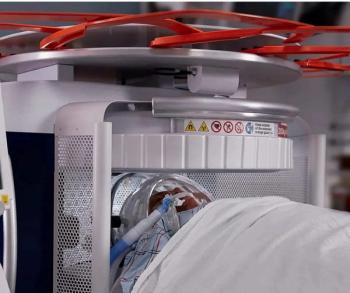
AI Accelerates Fully Automated CT Segmentation of the Pancreas
3D Convolutional neural network can effectively replace manual segmentation of the pancreas with or without cancer.
Using a 3D convolutional neural network (CNN) opens the door for automatic segmentation of the pancreas on CT imaging to pinpoint biomarkers for both endocrine and exocrine disease, new research shows.
In a poster presented during the Society for Imaging Informatics in Medicine (SIIM) 2021 Virtual Annual Meeting, Panagiotis Korfiatis, Ph.D., assistant professor of radiology and senior associate consultant for artificial intelligence in the medical physics division in the Mayo Clinic’s radiology department, revealed how using a 3D CNN automates pancreas segmentation on CT to save time in patients with both normal pancreas or pancreatic ductal adenocarcinoma (PDA).
For more SIIM 2021 coverage, click
“A deep-learning model developed on a large dataset of CT scans enabled accurate fully automated pancreas segmentation across a wide-range or CT slice thicknesses in cases with normal pancreas, as well as in those with PDA,” he said. “Furthermore, the model’s performance generalized on an external public dataset for normal pancreas.”
The model, he added, functions as a discovery tool for automated quantitative pancreas imaging in patients with neoplastic and non-neoplastic disease. It is an improvement over manual pancreas segmentation which is difficult to integrate into clinical practice because it can be time-consuming and cumbersome.
To test the CNN’s efficacy, two radiologists completed volumetric pancreas segmentation with a 3D slicer on 2,369 abdominal CT scans performed between 2006 and 2017. Of the scans, 519 showed PDA. In order to develop a two-stage 3D CNN model, Korfiatis’s team randomly divided the dataset into training (1,612 scans), validation (284 scans), and test (473 scans) sets. They compared the model’s performance for pancreas segmentation and differences in model-predicted pancreatic volumes versus ground truth volumes to the test set, and they used an external dataset of 80 CTs from the National Institutes of Health-Pancreas CT 3 for validation.
According to the team’s analysis, there was no difference in the model’s performance between different CT slice thicknesses, ranging from 1.25 mm to 5 mm, based on non-inferiority statistical testing. The team also found no difference in model-predicted and GT pancreatic volumes.
For more coverage based on industry expert insights and research, subscribe to the Diagnostic Imaging e-newsletter here .
Newsletter
Stay at the forefront of radiology with the Diagnostic Imaging newsletter, delivering the latest news, clinical insights, and imaging advancements for today’s radiologists.




























